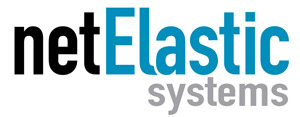According to a 2020 survey report from Ovum, 60% of service providers will reach wide-scale adoption of NFV across their networks during the next two years. This dramatic increase is being driven by NFV’s many benefits, including greater network agility, increased scalability, and lower costs. These same benefits are also driving the increased usage of virtual broadband network gateways (vBNGs).
Although vBNG adoption continues to rise, some providers may have concerns switching from traditional hardware-based BNGs to software-based BNGs. These concerns can include:
- Virtual BNGs won’t interoperate with existing legacy hardware systems
- Performance will be lower
- Product reliability issues
I’ll discuss each of these perceived risks below:

Lack of Interoperability with Legacy Systems
Compared to legacy systems from large networking hardware vendors like Cisco and Juniper (or smaller vendors like MikroTik), virtual BNGs are relatively new. Therefore, it’s natural for service providers to express interoperability concerns when starting to virtualize their networks.
To minimize this concern, providers should only consider vBNGs built on flexible, open software-based architectures. This is particularly important today with the increased level of network traffic and the need for flexible, scalable networks to quickly add capacity.
netElastic Virtual BNG is based on open source, open standards, and open APIs. This commitment to open systems has enabled netElastic to replace legacy hardware and successfully integrate into existing network architectures. And the core of vBNG is a powerful routing engine that supports full Layer 2 and Layer 3 functions.
In addition to vBNGs, as service providers virtualize more and more network functions they’ll discover no NFV vendor can provide every network function. So interoperability between different virtual network functions (VNFs) becomes critical.
Partner ecosystems can help solve this problem by bringing together best-in-class virtual network functions that provide end-to-end solutions to help accelerate network virtualization. NFV partner ecosystems provide multi-vendor integration and interoperability so service providers don’t need to focus on this with each individual VNF vendor.
Intel’s Network Builders Program is one of the best NFV partner ecosystems and was created to help accelerate network transformation through a thriving ecosystem of independent vendors. By taking advantage of partner ecosystems, service providers can continuously innovate with new services and choose best-in-class VNFs with minimal risk.
Lack of Performance
Virtual BNGs typically replace access routers and network operators used to buying access routers from Cisco and Juniper may be concerned about the performance of a virtual router solution (such as vBNG).
netElastic vBNG runs on commodity, x86 servers. To demonstrate the performance of a virtualized solution, Intel and netElastic jointly tested the netElastic Virtual BNG on an Intel® Select Solution for NFVI Forwarding Platform.
The test results showed that netElastic vBNG can achieve between 270 Gbps and 380 Gbps of throughput depending upon packet size with 128,000 attached devices. All tests were conducted to meet the IEEE RFC2544 standard for 0.001% packet loss. These performance results have set a new benchmark for vBNG performance.
vBNG Product Reliability
Product reliability can sometimes be a concern when evaluating new technologies or products. This is no different with Virtual BNGs. To help alleviate this concern, service providers should look for vBNG vendors with a track record in virtualization and the infrastructure in place to support current and future product development.
Founded by network industry veterans passionate about software-based networks, open systems, and scalable infrastructure, netElastic was one of the first companies to offer a Virtual BNG. To ensure vBNG met the needs of network operators, netElastic worked with eight of the top twenty carriers worldwide (and many smaller carriers) to develop vBNG.
Unlike most companies that sell and support vBNG, netElastic also has over 40 engineers dedicated to vBNG. This breadth and depth of knowledge and experience enables netElastic to bring both innovation and product reliability to service providers.
To learn more about Virtual BNGs, please download the white paper on: Next Generation Virtual BNGs: Preparing for the Exabyte Onslaught.
Connect with netElastic

